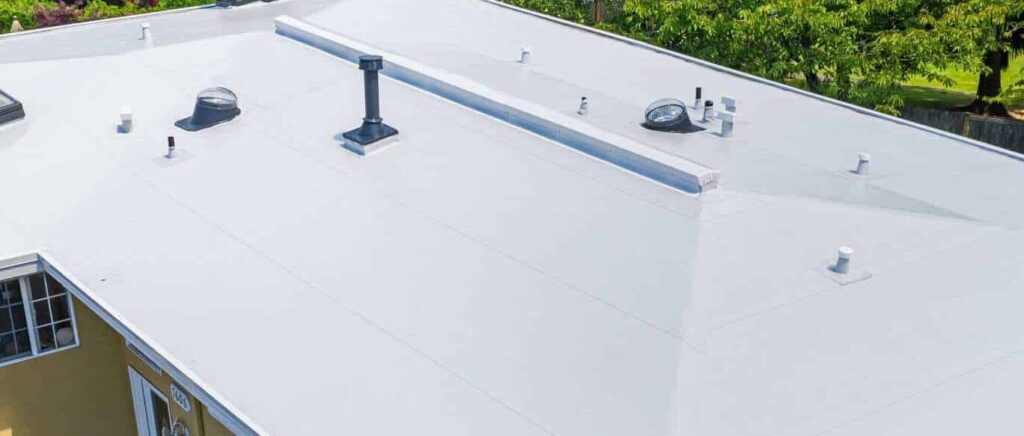


A flat roof comprises supporting beams, trusses, decking, underlayment, and roofing material. A lot goes into keeping a business facility safe from climate factors. Whether you're planning to construct a new flat roof or replace an existing one, it's crucial to know the terminology so you can communicate effectively with your roofing contractor. The following are some of the most significant flat roofing terminologies to be familiar with.
EPDM (Ethylene Propylene Diene Monomer) is a synthetic rubber made from raw gas and oil. Because of its easy installation process and longevity, it has become one of the most popular commercial flat roofing systems in the United States in recent times.
Modified Bitumen roofing systems are single-ply membranes placed to the roof surface by rolling. They are comparable to asphalt roofs. However, they contain extra polymers in their ingredients to give additional weather security and extend their lifespan.
Flat roof flashing is an integral part of a roof that should not be overlooked. Flat roof flashing is strips of metal bent at a 90-degree angle. Their primary function is to protect against ice, snow, water, and even some trash.
The material surface put to built-up roofs to safeguard the top layer of bitumen from direct sunlight and reflect solar radiation is known as aggregate. It aids in lowering the highest surface temperature, the black surface's short-term variations, and the seasonal temperature range.
To cover flat roofs, TPO (Thermoplastic Polyolefin) roofing systems comprise a single layer of synthetics and reinforcing scrim. TPO membranes come in 10-, 12-, or 20-foot wide sheets. Because of its inherently reflective surface, which safeguards the roof from UV damage, this roofing solution has received industry popularity.
The most well-known flat roofing element is built-up roofing, often called BUR. It comprises alternating layers of bitumen (asphalt) and reinforcing fabric, with a top coating of aggregate, which is usually stone or gravel.
The most common flat roofing element is PVC single-ply membrane. Flat roofs can even be installed using only PVC membranes. A PVC membrane is generally a single sheet of a thermoplastic element with heat-welded PVC seams to make a waterproof bond.
A roof slope is an angle at which the roof slants. The minimal slope for water to run down a roof is 1 percent (1/8′′ per 1′) in most cases. The minimal slope for a flat roof, according to building regulation, is 2% (1/4′′ per 1′). Even though a sufficient slope will enable rainfall to drain off the roof readily, your flat roof will almost certainly require a waterproof membrane.
The R-value of a roofing material indicates how well it resists heat flow. Many states mandate roof systems to have minimal heat resistance; therefore, knowing the R-value is critical for retail flat roofs. Your roofing contractor will consider the underlayment, membranes, insulation, cover boards, and adhesives when calculating the R-value of a roof system.
Roofers place water-resistant or waterproof items precisely onto the roof deck as roofing underlayment. It's frequently used as an additional coating of weather shield behind the rest of the roofing elements.
Where the paraphernalia panels meet, there is a roofing seam. TPO, PVC, and metal roofs are examples of this. Roof seams are usually the feeblest part of the structure.
Flat roofs can also be made with roofing felt, which is a common and traditional approach. Felt roofing, often referred to as tar paper, is applied with hot bitumen to form a strong adhesive between the roof and the felt.
Some of the most prominent flat roofing terminologies have been outlined and discussed above. We hope that you find this article useful and can utilize them when necessary. Visit us at 366 Grand Street Williamsburg, NY 11211 (718) 690-7084 https://www.williamsburgroofingny.com/ for more inquiries.
